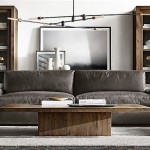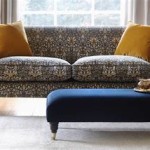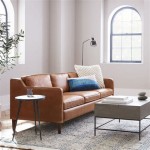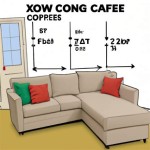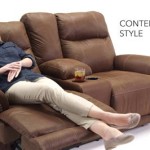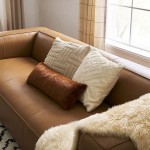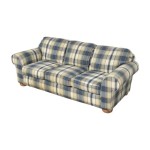```html
Antique Sofa Styles: A Guide to Timeless Seating
Antique sofas represent more than just a place to sit; they embody historical design trends, craftsmanship, and cultural values. Understanding the characteristics of different antique sofa styles allows collectors and enthusiasts to identify, appreciate, and preserve these valuable pieces of furniture. This article provides an overview of several prominent antique sofa styles, highlighting their defining features and historical context.
The term "antique" generally refers to items at least 100 years old. However, the designation can sometimes be applied more loosely to pieces that are clearly representative of a specific era or design movement, even if slightly younger. This article focuses on styles that originated primarily before the mid-20th century, reflecting the period when handcrafted techniques and distinctive design philosophies were paramount.
Key Characteristics of Antique Sofas
Several factors contribute to the identification of antique sofa styles. These include the overall shape and form, the materials used in construction (wood, upholstery, stuffing), the decorative details (carving, inlay, trim), and the historical context in which the sofa was produced. It is important to consider all these elements in conjunction to accurately determine the style and origin of a particular piece.
The frame of an antique sofa plays a crucial role in determining its style. Frame shapes can range from straight and rectangular to curved and flowing, reflecting the prevailing aesthetic preferences of the time. The type of wood used, such as mahogany, walnut, oak, or rosewood, also provides clues about the sofa's origin and value. The presence of intricate carving or ornate details further enhances the sofa's visual appeal and historical significance.
Upholstery fabrics and techniques also offer important insights into the sofa's style and era. Early antique sofas often featured natural materials like linen, wool, or leather, which were hand-stitched and attached to the frame using traditional methods. The patterns and colors of the upholstery can reflect the fashion trends of the time, while the type of stuffing materials used (e.g., horsehair, feathers, cotton) can provide further clues about the sofa's age and origin.
Popular Antique Sofa Styles
A vast array of antique sofa styles emerged over the centuries, each with its unique characteristics and historical significance. The following sections describe some of the most popular and recognizable antique sofa styles.
Camelback Sofa
The Camelback sofa, prevalent during the 18th century, is distinguished by its arched back, resembling a camel's hump. This design typically features a serpentine or undulating curve along the top rail, with the highest point in the center. Camelback sofas often have outwardly rolled arms and exposed wooden legs, which may be straight, cabriole, or tapered. Upholstery fabrics commonly used for Camelback sofas include damask, brocade, and floral prints, reflecting the elegance and refinement of the Georgian and Federal periods.
The development of the Camelback sofa is largely attributed to Thomas Chippendale, a renowned English furniture designer. His designs, published in "The Gentleman and Cabinet-Maker's Director," influenced furniture makers throughout Europe and America. Camelback sofas became a popular choice for wealthy families seeking comfortable and stylish seating options.
Chippendale Sofa
As indicated above, the Chippendale style, named after Thomas Chippendale, encompasses a range of furniture designs characterized by elegance, grace, and versatility. Chippendale sofas typically feature a curved or serpentine back, often with intricately carved details. The legs may be straight, cabriole, or claw-and-ball, and the arms can be rolled or flared. Chippendale sofas are often made from mahogany or walnut and upholstered in rich fabrics such as silk, velvet, or damask. The style is known for its integration of Gothic, Rococo, and Chinese influences.
Chippendale's designs were widely copied and adapted during the 18th century, resulting in various regional variations of the Chippendale style. These variations often reflect local materials and craftsmanship techniques. The Chippendale sofa remains a highly sought-after antique, valued for its timeless appeal and historical significance.
Chesterfield Sofa
The Chesterfield sofa is known for its deep button tufting, rolled arms, and equal back and arm height. Legend has it that the Earl of Chesterfield commissioned the first Chesterfield sofa in the 18th century. Characterized by its luxurious comfort and sophisticated appearance, the Chesterfield has become a symbol of British elegance. Traditional Chesterfield sofas are typically upholstered in leather, although fabric versions are also available. The deep button tufting creates a diamond-shaped pattern across the back and arms, adding to the sofa's distinctive look.
The Chesterfield sofa has evolved over time, with variations in size, shape, and upholstery. However, the defining features of deep button tufting and rolled arms remain constant. The Chesterfield is a versatile piece of furniture that can complement a wide range of interior styles, from traditional to contemporary. It stands as a testament to the enduring appeal of classic design.
Victorian Sofa
Victorian sofas, prevalent during the reign of Queen Victoria (1837-1901), are characterized by their ornate designs, elaborate carvings, and plush upholstery. These sofas often feature curved lines, scrolled arms, and cabriole legs. The upholstery fabrics used for Victorian sofas are typically rich and luxurious, such as velvet, silk, and brocade, often adorned with floral patterns or intricate embroidery. The stuffing materials are generous, providing a comfortable and opulent seating experience.
The Victorian era was marked by a resurgence of historical styles, including Gothic, Renaissance, and Rococo. Victorian sofas often incorporate elements from these styles, creating a unique and eclectic aesthetic. The emphasis on comfort and extravagance reflects the Victorian era's focus on domesticity and social status. The Victorian sofa remains a popular choice for those seeking to add a touch of grandeur and elegance to their homes.
Art Deco Sofa
Art Deco sofas, popular during the 1920s and 1930s, reflect the geometric shapes, streamlined designs, and luxurious materials that define the Art Deco movement. These sofas often feature clean lines, bold colors, and symmetrical patterns. The upholstery fabrics used for Art Deco sofas include velvet, leather, and silk, often embellished with geometric motifs or metallic accents. The frames are typically made of wood or metal, with a focus on craftsmanship and attention to detail.
The Art Deco movement was a reaction against the ornate and fussy styles of the Victorian era. Art Deco sofas represent a departure from traditional designs, embracing modernity and innovation. These sofas are often considered works of art, blending form and function in a sophisticated and stylish manner. Art Deco sofas remain highly sought after by collectors and enthusiasts who appreciate the design movement's unique aesthetic.
Factors Influencing Value
The value of an antique sofa depends on several factors, including its style, age, condition, provenance, and rarity. Sofas from well-known makers or designers, such as Chippendale or Sheraton, typically command higher prices. Sofas in original condition, with minimal repairs or alterations, are also more valuable than those that have been heavily restored. The provenance of a sofa, or its documented history of ownership, can also enhance its value.
The rarity of a particular style or design can also affect its value. Sofas with unique or unusual features, or those made in limited quantities, are often more desirable to collectors. The condition of the upholstery and frame is crucial. Rips, tears, or stains in the upholstery can significantly reduce the sofa's value, as can structural damage to the frame. Consulting with a qualified antique appraiser is recommended to determine the fair market value of an antique sofa.
Preserving Antique Sofas
Proper care and maintenance are essential for preserving antique sofas and maintaining their value. Regular cleaning with a soft brush or vacuum cleaner can help remove dust and dirt. Avoid placing antique sofas in direct sunlight or near sources of heat or moisture, as these conditions can damage the upholstery and frame. Professional cleaning and restoration services can address more serious issues, such as stains, tears, or structural damage. When considering reupholstery, carefully choose a fabric that is appropriate for the sofa's style and era. It is often advisable to consult with a professional upholsterer who specializes in antique furniture.
Understanding the various antique sofa styles, their characteristics, and the factors that influence their value allows collectors and enthusiasts to make informed decisions when acquiring and preserving these timeless pieces of furniture. By appreciating the history, craftsmanship, and design of antique sofas, we can ensure that these valuable objects continue to be enjoyed and admired for generations to come.
```
Vintage Victorian Style Tufted Sofa Needs Reupholstery
:max_bytes(150000):strip_icc()/CanapeAConfidanteSofa-56a018883df78cafdaa010b3.jpg?strip=all)
11 Antique Couch Sofa And Settee Styles

Boho Style Upcycled Upholstered 1920s Vintage Sofa Repurposed In Designers Guild Fabrics By Jane Hall Design

Sofa Style Guide Knowledge Center Antiques Design Timothy Corrigan
:max_bytes(150000):strip_icc()/Chesterfield-57a981673df78cf459cce958.jpg?strip=all)
11 Antique Couch Sofa And Settee Styles

Popular Antique Classic Style Elegant Sofa Set For Living Room Carved Wood Golden 30800

Tea For Two Furniture Design Sketches Sofa Styling Styles

Antique Circa 1830 S Empire Striped Upholstery Sofa

Choosing A Vintage Style Sofa She Holds Dearly Sofas Victorian French

Sofa Style Guide Knowledge Center Antiques Design Timothy Corrigan

